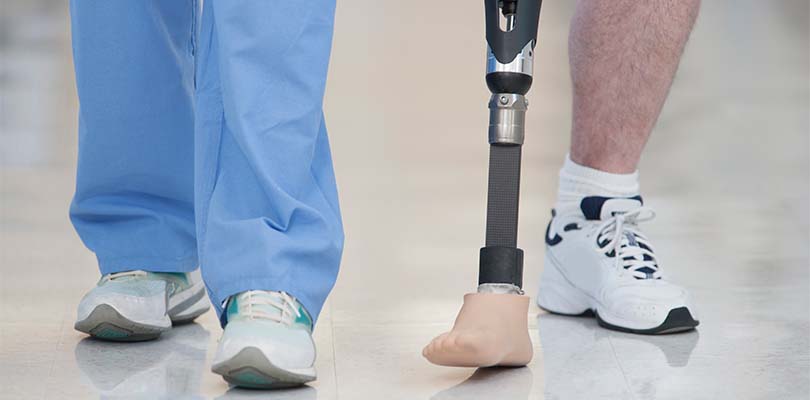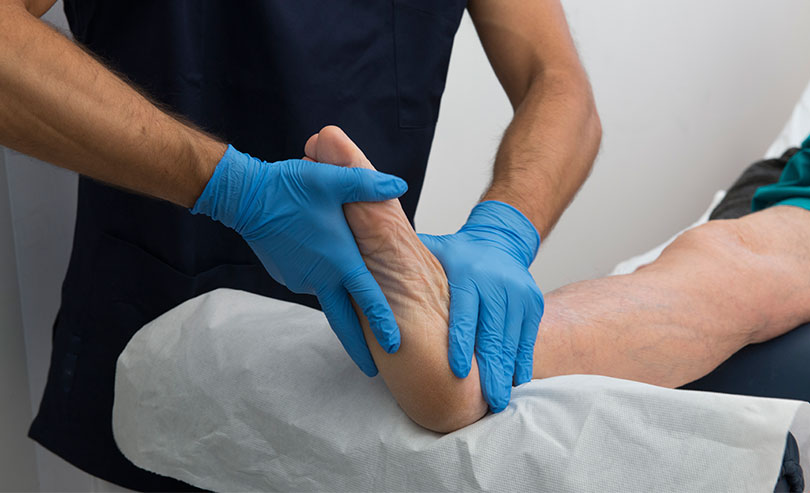Everything You Need to Know About an Amputation for Diabetes
Although the incidence of amputations for diabetes has decreased over the past 20 years, it is still a significant problem. In fact, diabetes is a leading cause of amputation, accounting for approximately five out of six cases. Therefore, it is essential for anyone with diabetes to understand how the condition can lead to amputation.
What Is Diabetes?
Diabetes is a condition in which the pancreas is unable to make insulin or the body cannot use insulin effectively. This leads to problems with controlling the blood sugar and a variety of symptoms and complications.
There are several types of diabetes, but the most common are type 1 and type 2. Type 1 diabetes is an autoimmune disorder and tends to occur in young people. Type 2 diabetes usually affects older people and is often (but not always) associated with being overweight.
Despite these differences, type 1 and type 2 diabetes have very similar symptoms. Furthermore, they can both increase the risk of amputations.
Diabetes Symptoms
The most common symptoms of diabetes:
- Increased thirst
- Excessive hunger
- Frequent urination
- Fatigue
- Weight loss
- Blurred vision
- Slow wound healing
- Tingling or numbness in the hands or feet
Diabetes is also associated with a number of serious, long-term complications:
- Peripheral neuropathy (nerve damage)
- Peripheral artery disease (blood vessel damage)
- Heart disease
- Kidney disease
- Diabetic retinopathy
It is these complications that make amputations more common among diabetics.
How Diabetes Can Lead to Amputation
People with diabetes often have damaged nerves and blood vessels as a result of high blood sugar over sustained periods. Blood vessel disorders can impair the circulation, especially in the lower legs and feet. Meanwhile, nerve damage means that diabetics may be less sensitive to pain than healthy people.
This combination of factors means that wounds may be slow to heal, and can often go unnoticed, especially on hard-to-see areas such as the feet. For this reason, diabetics must take special care of their feet and check them on a daily basis.
If a wound or ulcer is missed, it can easily become infected. Over time, this may lead to tissue death and a condition called gangrene. These are the issues that lead to most amputations in diabetic patients. The most commonly affected areas are the toes, feet and lower legs.
The main risk factors for amputations in diabetics:
- Poorly controlled blood sugar
- High blood pressure
- Smoking
- Ill-fitting footwear
- Walking barefoot
- Poor eyesight
Although diabetic foot problems may not immediately spring to mind, for reasons to control your sugar, they should be at the top of your list of concerns.
Many common foot problems can also increase the risk of infection and amputation in diabetes:
- In-grown toenails
- Cracked heals
- Corns
- Callouses
- Warts
- Fungal infections
People with diabetes may also develop a condition called Charcot foot. This is a type of deformity that can increase pressure on one part of the foot, potentially leading to ulcers.
When Is Amputation Necessary?
Amputation is a major procedure and has huge physical and psychological impacts on the patient. Therefore, it is not something that doctors recommend lightly.
In mild cases of infection or gangrene, a surgeon will do everything they can to save the affected area. This includes removing dead tissue and debris from the wound, cleaning it and administering treatments to aid healing.
However, in more severe cases, the area may be so badly damaged that it is impossible to save. For example, if gangrene has spread to the bone, the damage may be irreparable. Sometimes an amputation is also necessary if an infection cannot be stopped and becomes life-threatening.
The Process of Amputation for Diabetes
The exact procedure will depend upon the patient and the area that requires amputation. In most cases, the operation will be done under general anesthetic or epidural anesthetic that numbs the lower half of the body.
Once the anesthetic takes effect, the surgeon will remove the dead and damaged tissue. They will try to preserve as much of the healthy tissue as possible. The surgeon may also shorten and smooth the bone, allowing more soft tissue to cover it once it heals.
They will then attach the remaining muscle to the bone in a process called myodesis. This helps to strengthen and stabilize the area. Finally, they will close the wound with surgical stitches or staples. They may also insert a tube to drain away excess fluids as the wound heals.
Once the amputation is complete, the patient will need to stay in hospital for a few days for monitoring. During this time, they may receive oxygen therapy, intravenous fluids and painkillers. They may also require a urinary catheter or bedpan so that they do not need to get up.
After the surgery, the patient will need to wear a compression garment to reduce the swelling. This also helps to support the amputated limb and reduce the risk of phantom pain.
Throughout the healing process, the patient will need to care for their stump carefully and watch for signs of infection. They should wash the stump daily with warm water and mild soap, dry it carefully, and apply moisturizer. It is necessary to avoid soaking the stump in a bath as this will soften the skin and delay healing.
Signs of infection:
- Persistent swelling
- Redness
- Skin that feels hot to touch
- Pus or fluid coming from the wound
If any of these symptoms occur, seek medical attention immediately.
Recovering From an Amputation for Diabetes
The recovery process is a long one and involves a team of specialists. Some of the medical professionals involved:
- Physical therapist: helps the patient to regain strength, coordination and balance, and can assist with using a prosthetic limb or wheelchair.
- Occupational therapist: helps the patient to adapt to daily life using their prosthetic or mobility aid.
- Psychologist/psychiatrist: helps the patient deal with the psychological impact of an amputation, which can include anxiety, depression, grief, denial and suicidal thoughts.
- Endocrinologist: helps the patient to manage their diabetes in the future and reduce the risk of further amputations.







